Background
On April 27, President Biden signed Executive Order (EO) 14026 that increases the national minimum wage for federal contractors from $10.95 to $15/hr., effective January 2022, with subsequent cost-of-living adjustments. Censeo conducted an analysis to understand the impact the Executive Order will have on Federal contracting operations.
Using data from the Department of Commerce, the Department of Labor, the General Services Administration, the System for Award Management and USAspending.gov, augmented with interviews with subject-matter experts, we have projected the overall impact the Executive Order will have on contract spending and on contracting workloads. Analysis of the broader economic impact of the Executive Order is outside the scope of this study.
Censeo analysis shows that the overall impact on government contract spending will be minor. However, tens-of-thousands of contracts will require agency review and modification. We project that analyzing and modifying these contracts will add 450,000 additional hours to the workload of contracting offices, which is the equivalent of over 240 additional full-time roles.
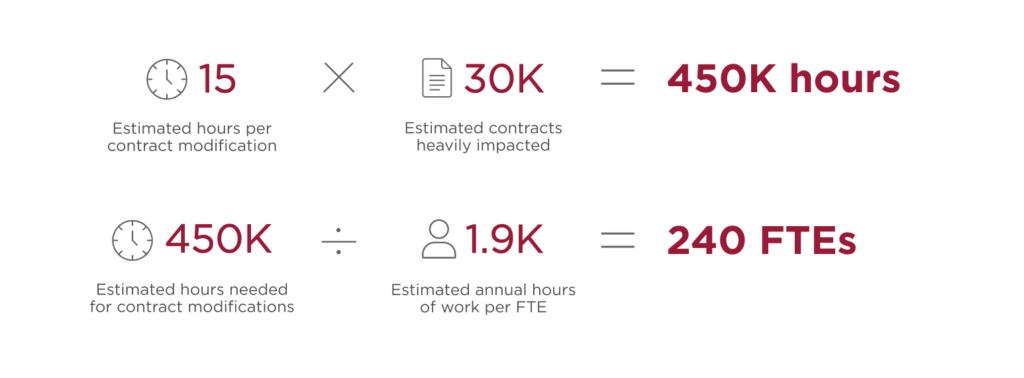
Findings
In the following sections we describe the impact the Executive Order will have on overall government contract spending, and how that impact will be spread across spend categories and geographic regions.
Impact on Federal Contract Spending
The Executive Order will have a minor impact on overall contract spending. In fiscal year 2019, the Federal government spent approximately $597 billion on goods and services, supporting a contractor workforce of approximately five million individuals. Approximately 14% of this workforce (695,000 individuals) have job classifications whose hourly rates may be impacted by the Executive Order.
However, these individuals support contracts that represent only 3% of Federal contract spend ($20.6 billion). And, as many individuals supporting these contracts currently receive wages above $15/hour, Censeo estimates that only 5% to 10% of this potential spend would ultimately be impacted by the EO. As such, the total impact to Federal spending will likely be between $1 billion and $2 billion. This generally aligns with a separate study conducted by the Economic Policy Institute, which estimated that the cost impact of the Executive Order to be between $700 million–$1.2 billion.
Impact by Region
Contracts performed in Southern and Midwestern states are most likely to be impacted by the order. For example, by analyzing wage rates covered by the Service Contract Act (SCA), we determined
that 29% of SCA-covered roles in Mississippi, 28% of SCA-covered roles in Arkansas, and 23%
of SCA-covered roles in South Dakota had prevailing wages below $15/hr. In contrast, nationally only 18% of SCA-covered roles have prevailing wages below $15/hr.
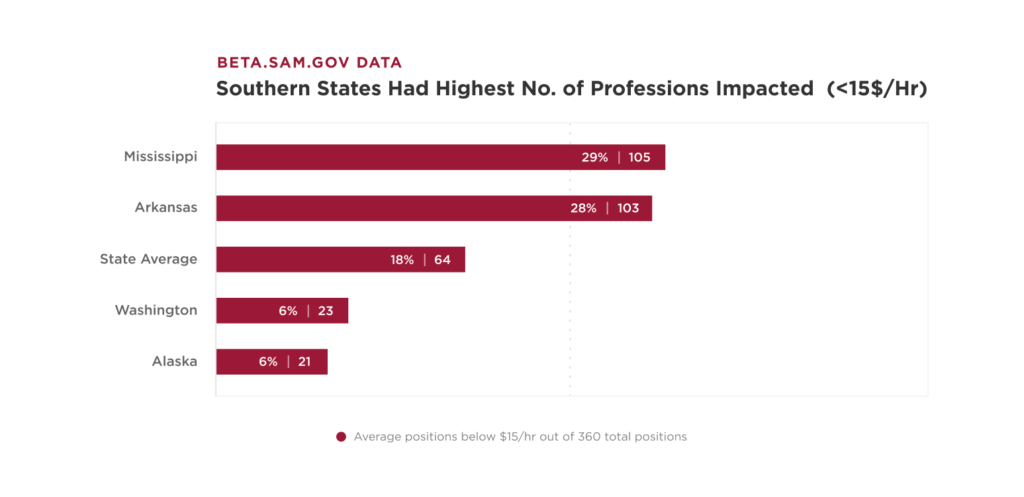
Similarly, the EO will have more of an impact on contracts performed in rural locales than in urban locales. Nationwide, 21% of positions covered by the SCA in rural areas have a prevailing wage under $15/hr., compared to just 15% in urban areas. This rural/urban discrepancy exists even within a single state. For example, 37% of SCA positions in rural Texas locales had prevailing wages below $15/hr., compared with just 18% in urban Texas locales.
Impact on Spend Categories
Contracts for professional services will see virtually no impact from the Executive Order. Using vendor billing rates and benchmarks on the relationship between employee wages, fringe benefits, profit, and billing rates, we estimate that only labor categories with a billing rates below $26.25/hr. will
be impacted by the executive order. Of the 43,000 professional services labor categories we analyzed, less than 1% (406 labor categories) met this threshold.
However, service contracts with scopes for working-class occupations (excluding construction) will have a more significant impact. For example, Department of Labor data shows that 30% of administrative support, clerical roles have prevailing wages below $15/hr., while up to 84% of positions for laundry/ dry-cleaning services are below $15/hr.
By marrying SCA prevailing-wage data to contract data from USAspend.gov, we have projected the number of contracts likely to be impacted by the order by category:
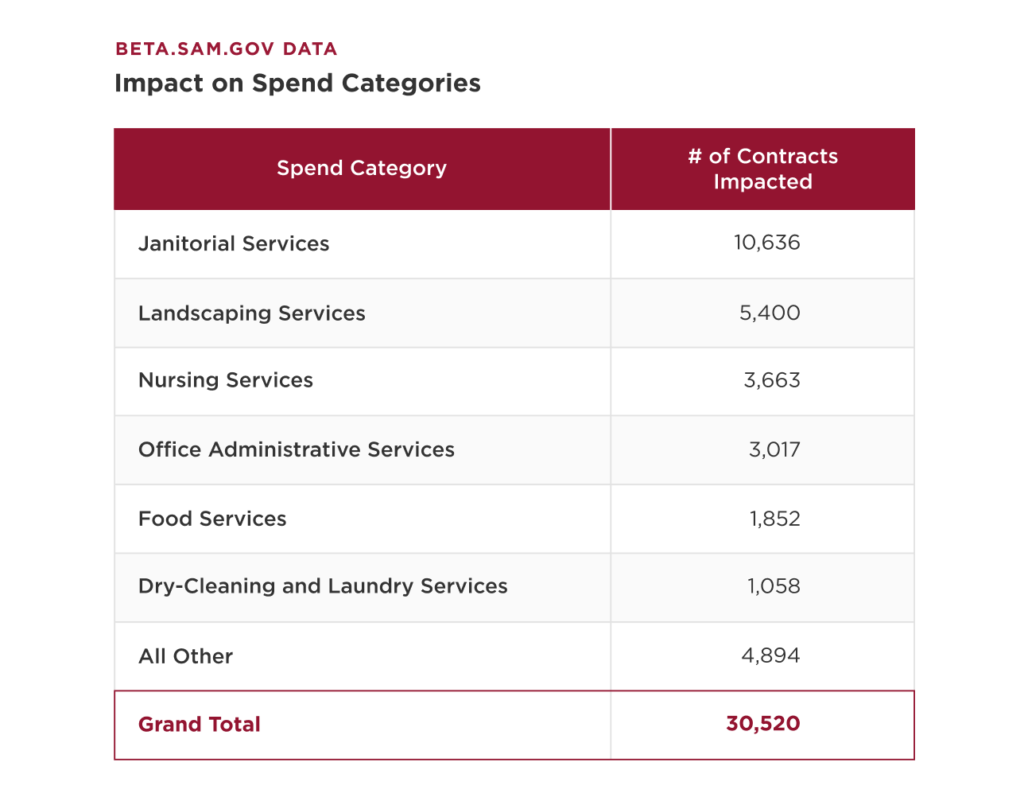
Implications for Management
As discussed above, over 30,000 contracts are likely to be impacted by the Executive Order.
The agencies that will be most impacted are the Department of Defense, the Department of Veterans Affairs, the Department of Agriculture, and the Department of State.
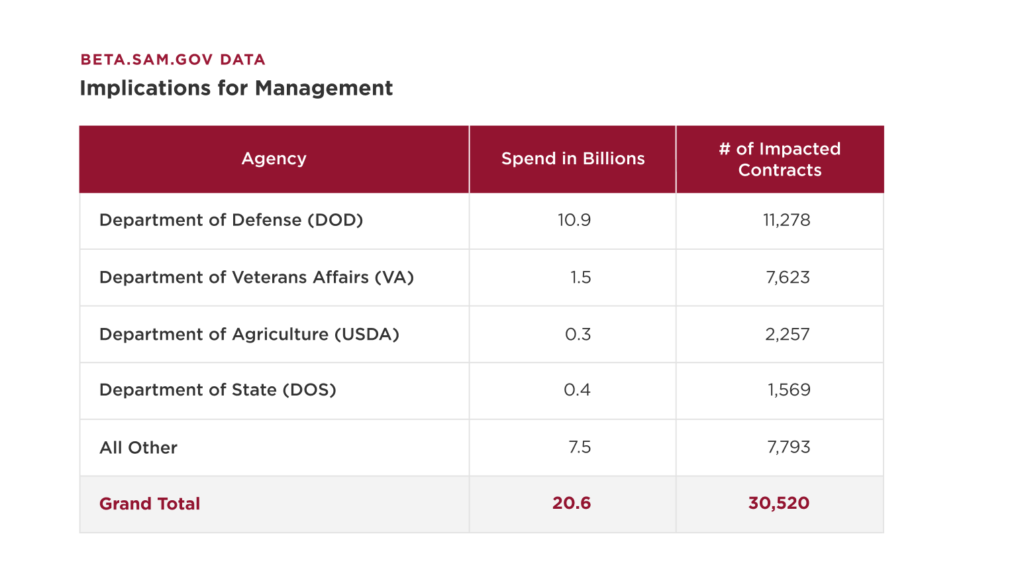
Agencies will need to analyze and modify these contracts to ensure compliance with the Executive Order. Censeo’s benchmarks suggest that each contract modification will require approximately 15 hours of work. As a result, we project that the Executive Order will add up to 450,000 total hours of work to Federal contracting offices, the equivalent of over 240 full-time employees.
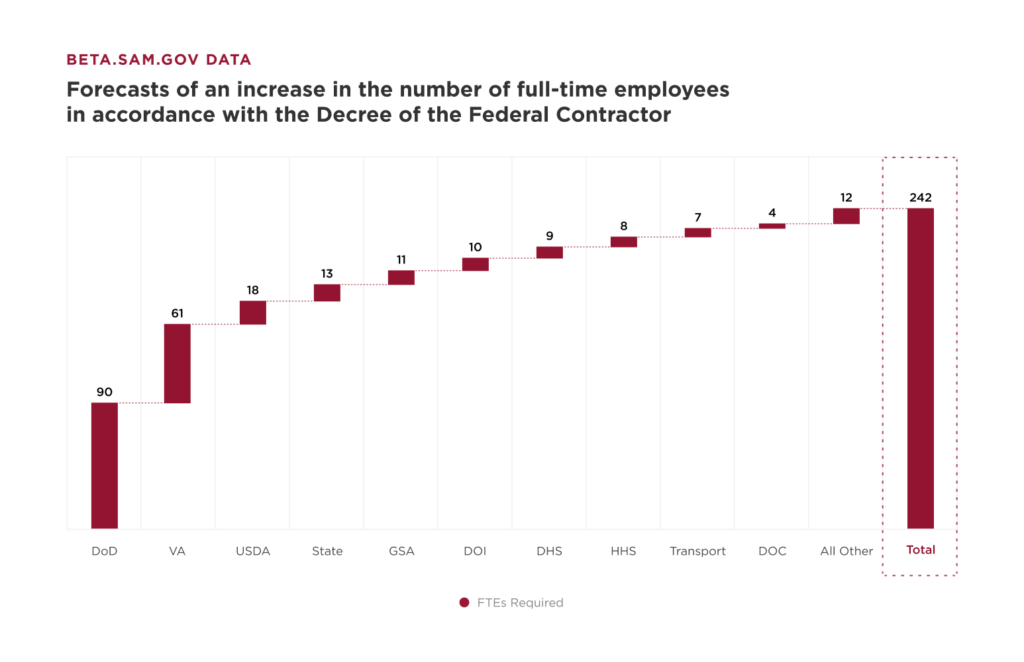
Censeo is advising our clients to start planning now for this increase in contract management workload. Specifically, we recommend agencies take the following steps now to prepare for the order going into effect in 2022:
- 01.Segment your contract portfolio by spend category and delivery location to identify contracts most likely to be impacted by the Executive Order.
- 02.Within the segments likely to be impacted, analyze vendor price structures to identify specific contracts which will require modifications.
-
03.Develop a formal policy and process for how the agency will address these contracts. Answer questions such as:
- Who will be responsible for ensuring contracts comply with the EO? Will it be the responsibility of individual contracting officers, or will the agency set up a discrete working group?
- How will your agency engage with vendors whose contracts are likely impacted?
- What information will vendors need to provide before changes are made to their contracts? How will this information be validated?
- What is the expected cost impact on current and planned contracts? How will cost increases on current contracts be funded?
Let Our Team of Experts Help you Today







